Colors to avoid in a bedroom – 7 shades never to paint your sleep space
We’ve asked designers and paint experts what colors to avoid in a bedroom, and some of the advice my surprise you (sorry grey lovers)
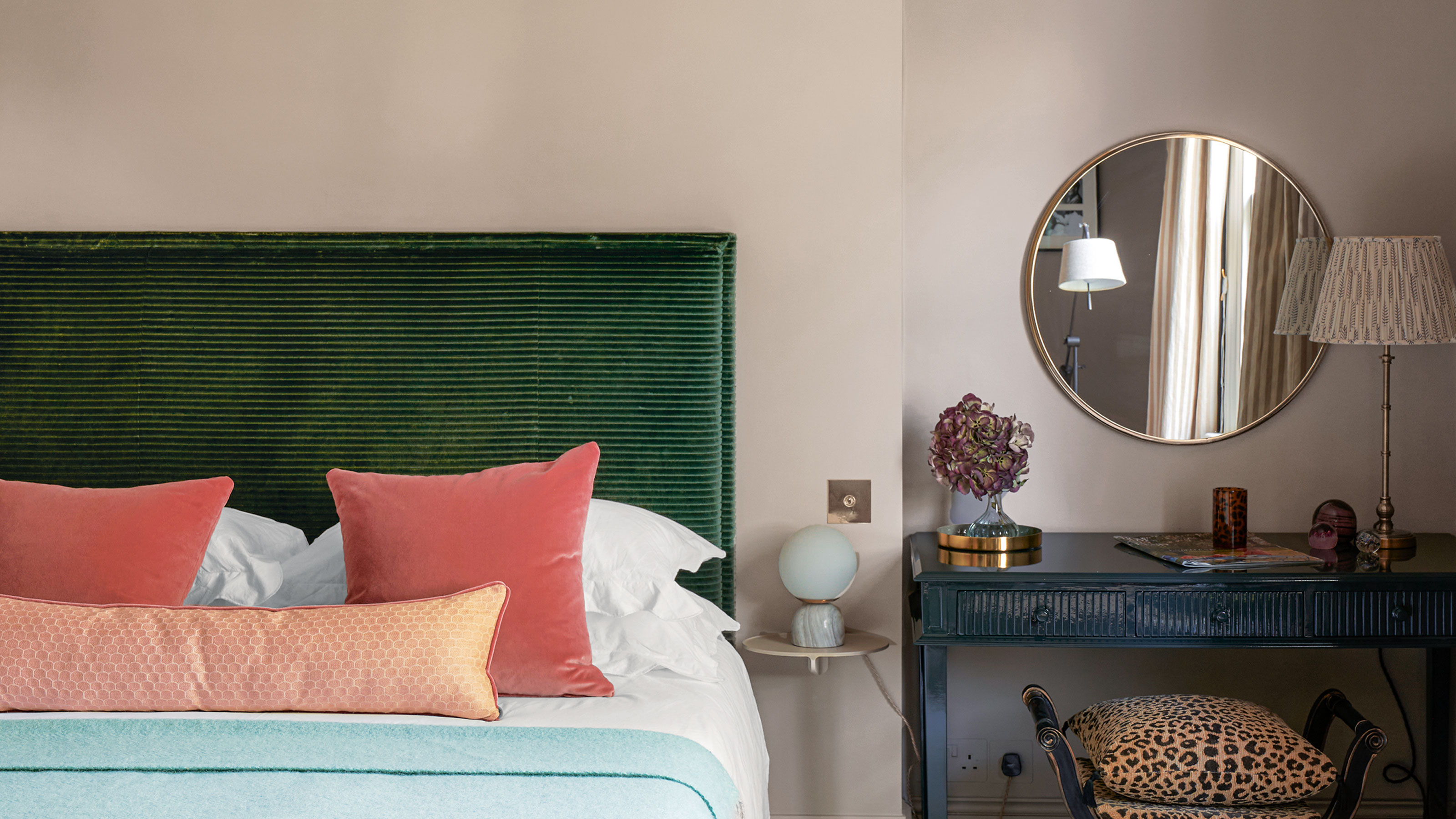

We are always asking designers and paint experts for their advice on the best colors for certain rooms, how to get the right tone for the lighting levels, the right shade for the size of room and all the color psychology behind choosing the perfect hue.
But it can be just as important to know what colors to avoid in a bedroom – for example, what colors are known to prevent sleep and relaxation or make a bedroom feel stark and cold? What shades will sap your energy of a morning or absorb all the natural light in the room?
We asked the experts what their no-go bedroom color ideas are when it comes to painting the space. Should we all be sticking with soft and gentle neutrals of can you go bolder with a magenta pink or vivid green? And what are the rules you should always play by when choosing the best bedroom colors?
7 colors to avoid in a bedroom
Avoiding whole colors on the color wheel sounds a bit limiting right? And surely it all comes down to tastes and personality anyways? Which is totally true and why while some colors are a total no go when it comes to bedroom ideas (good luck to you trying to make a bright red work) it's actually more about shades and what shades are best avoided if you want to create a serene, calming sleep space.
As designer and founder of A New Day Andrew Griffith explains, ‘As with any room, when choosing a color you need to give careful consideration to which way it faces. This helps you understand the amount and type of light the space gets, and you can then choose shades that play into that.’
‘So if you’ve got a room with little light, avoid cool tones and either opt for something warm and light or lean into the lack of light with a dark and moody color.’
‘Bedrooms are a very personal space, there are no ‘wrong’ colors, but there will likely be colors that don’t work for how you want the space to feel. I find that people broadly fall into a camp of either wanting to wake up in a bright, light bedroom and those who really want a cozy, cocoon-type space to relax and escape to. Have a think about which of those you are, and plan colors that speak to that rather than jumping to a color you love on paper.’
So with that in mind, here are the shades to avoid and tips on what colors to opt for instead.
1. Red
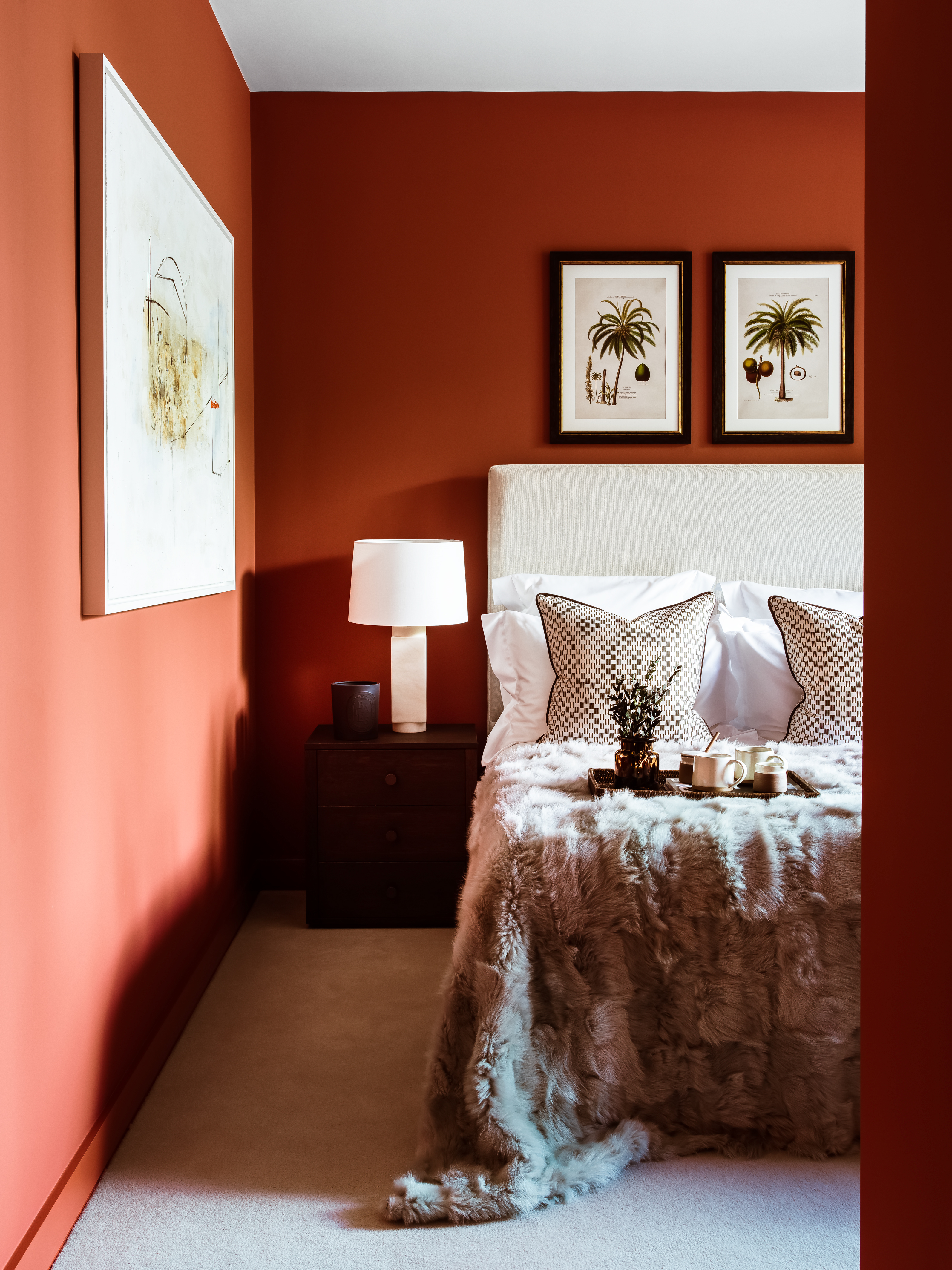
Red was by far the most common color to avoid in a bedroom and while we have seen examples of it working it is a very tricky color to get right. Red by its very nature is invigorating, bold, brave and while we love it for all those reasons, it's not really the vibe you want to be going for in a bedroom.
Designer Marie Flanigan explains, ‘Colors to be avoided in a bedroom are often colors that don’t offer a sense of calm. Reds, oranges, and yellows are colors I tend to leave out of bedroom designs.’
‘Red paint in bedrooms can be a little too brothel and pure hot red won’t be conducive to a peaceful night’s sleep,’ explains color and paint expert Annie Sloan. ‘Alternatively, a neutral bedroom scheme will give your room the illusion of being bigger and brighter, while creating a soothing space for sweet dreams and lazy Sunday mornings. To avoid a clinical look, introduce a disrupter color on a focal piece such as a bed frame. A burst of your favorite statement shade will add personality and really pop against the clean gallery-style backdrop.’
Want to make red work in your bedroom? Take note from this gorgeous cocooning space and opt for a terracotta tone paired with plenty of crisp clean whites.
2. Yellow
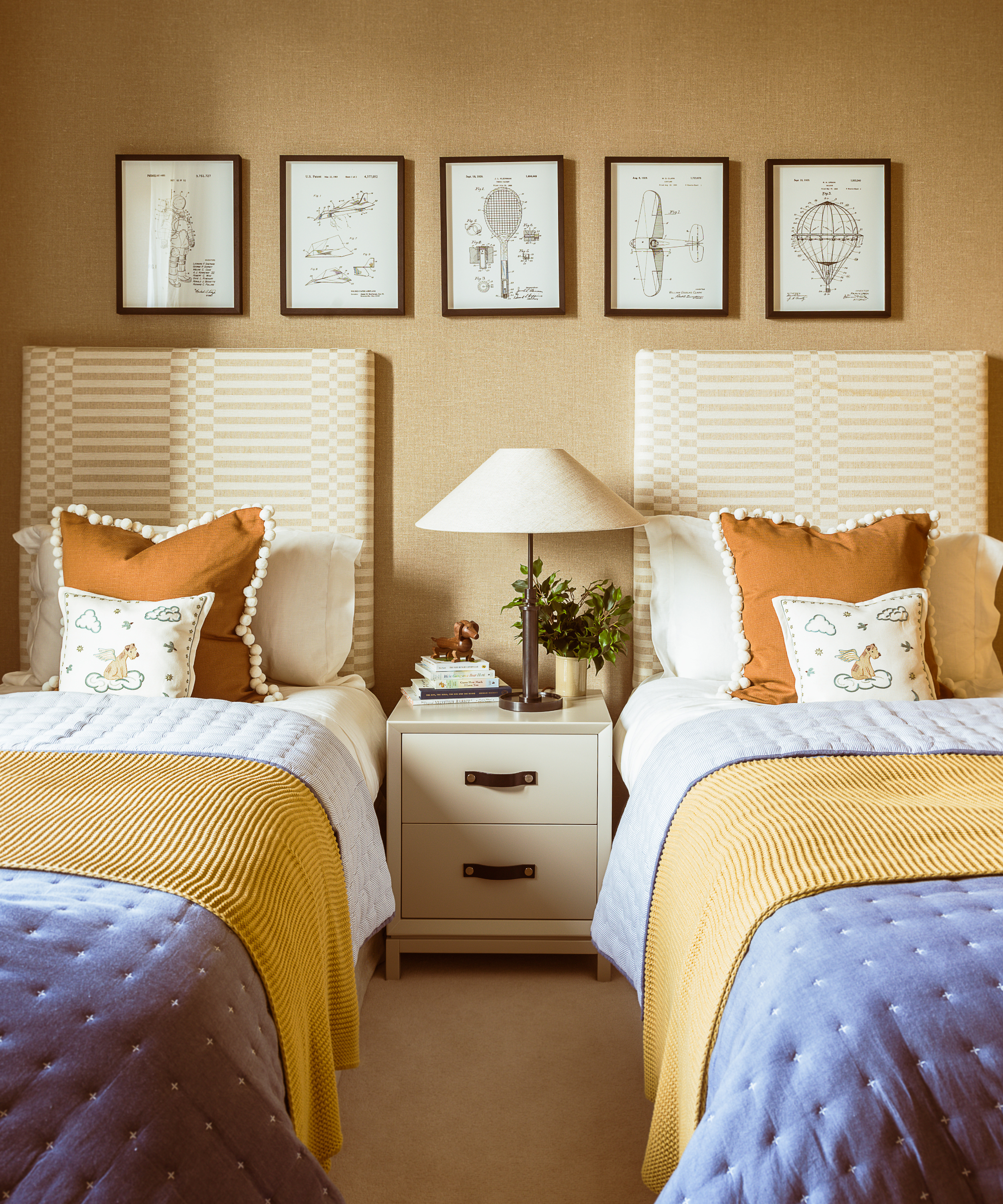
Yellow is famed for its lovely sunny properties, and while we have seen it gaining traction in kitchens (the room where we believe all color experimentation should happen) it came up frequently as one to avoid in a bedroom. But as we have mentioned it does all come down to the shade you choose, we'd recommend avoiding those bold, very primary yellows as they won't help induce a calming, sleep-encouraging environment. Instead pick a soft, soothing creamy yellow as seen in this lovely bedroom designed by Albion Nord.
‘As with every room in your home think about how it will respond to the natural light in your bedroom, if chilly & north facing err towards warmer tones, and remember, true yellows can be quite energetic so not necessarily what you want in a place of calm but if yellow is your thing, look towards browner caramel shades or deep ochres,’ explains Patrick O’Donnell of Farrow & Ball.
It can work well when paired with other shades too, you just have to choose the right color that goes with yellow that will tone down its vivid properties, and yet you still get that lovely sunny warmth.
3. Grey
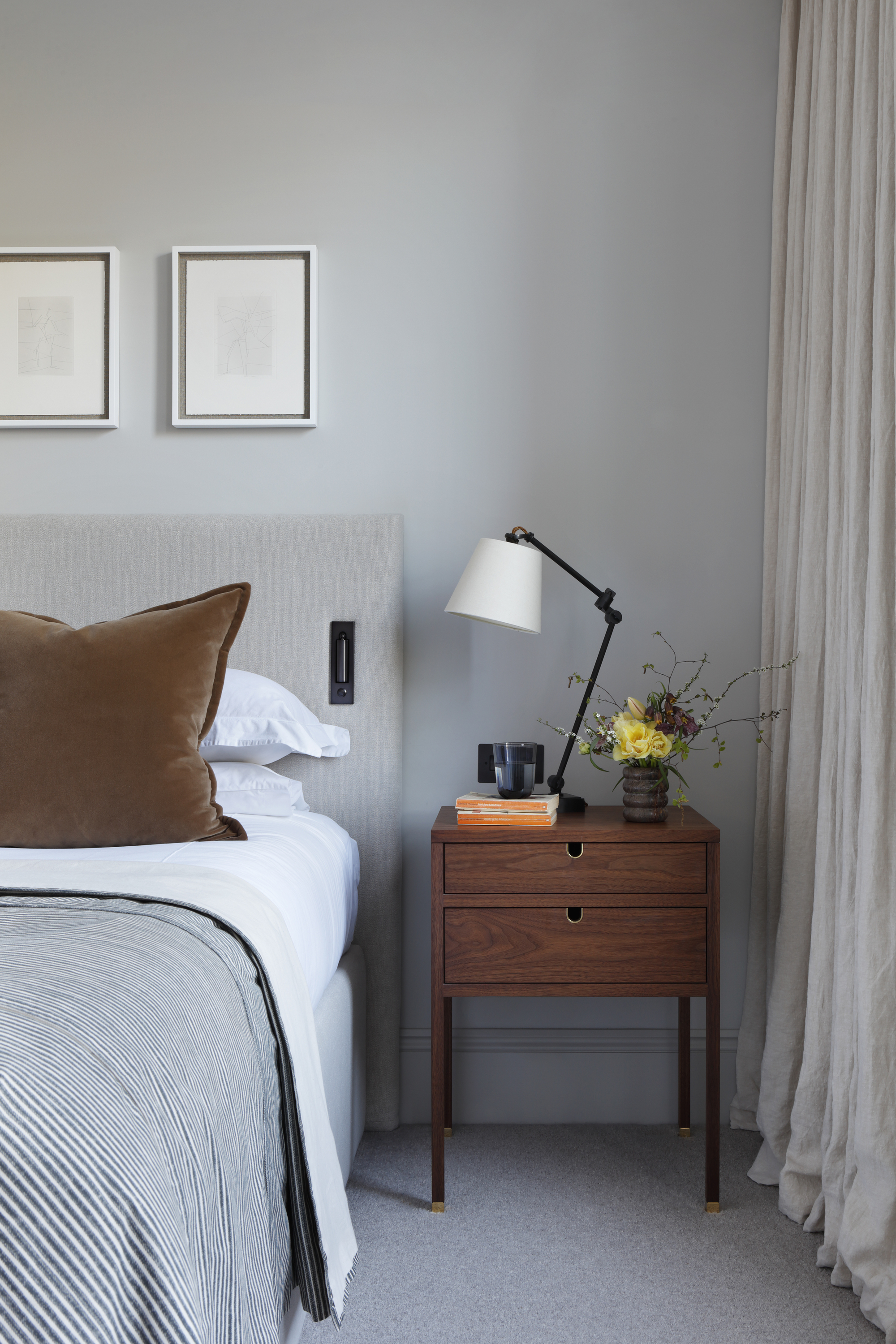
Shook. Grey is one of the most popular bedroom colors and yet designers often recommend avoiding it in a bedroom. Tash Bradley, color expert at Lick Home says that ‘when you wake up to a grey bedroom, it’s almost like waking up to a grey day every morning. It makes you not want to get out from underneath the covers. When I look out the window and see a grey day my energy levels slump so I avoid ever recommended grey in bedrooms.' Which of course makes total sense.
Helen Shaw, Director of Benjamin Moore agrees that there are ‘Three colors you should keep to accents only in a bedroom are red, yellow and – perhaps surprisingly, grey. Why? Well, red promotes energy, and interaction and can even raise our blood pressure, making sleep difficult; yellow is great for pops of color but not on every wall of a bedroom as it can over-stimulate the nervous system; and grey, although initially calming, will eventually sap energy.’
If you just can't part with your grey bedroom scheme, what we would recommend is opting for warmer, beige-toned greys and avoiding any shades that have a cool, blue undertone. Or as seen here, pair greys with warm brown tones and wooden accents.
4. Bold blues
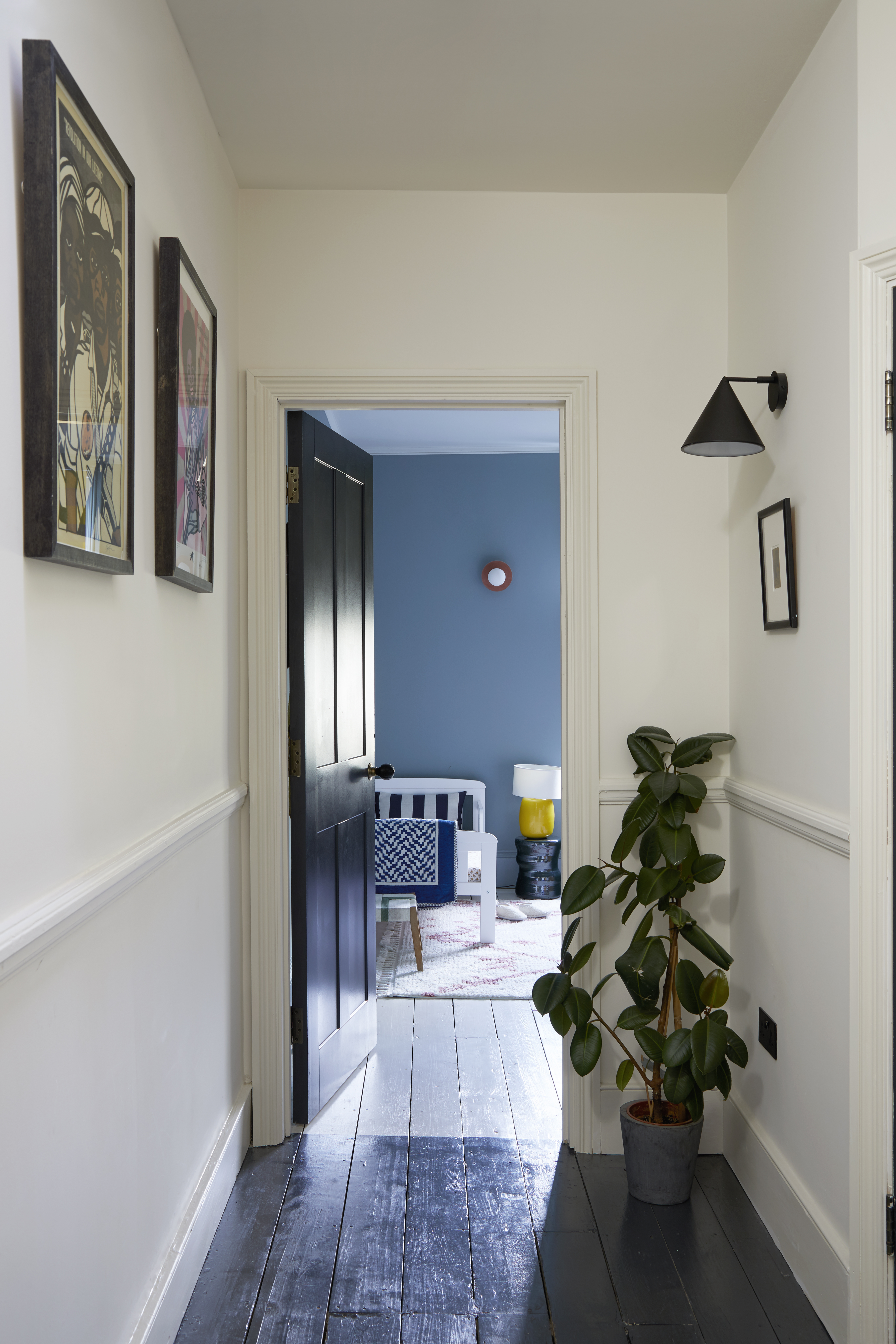
We have recommended blue bedroom ideas time and time again. Blue is one of the most calming, serene hues on the color wheel, and there’s loads of color psychology to back up painting a bedroom blue. However, going back to that all-important word – shade.
As designer Kate Watson-Smyth (A.K.A Mad About The House) says, ‘It’s often said that there’s no such thing as the wrong color – just the wrong shade, and nowhere is that truer than in the bedroom.’
‘When it comes to choosing colors for this room you have to go one step further than looking at the shades you like and take the time to notice how they make you feel. It’s no good painting all the walls cobalt blue if that shade makes you feel energized and bouncy – save that for the kitchen and if blue is your favorite (along with the rest of the world) then focus on finding a version that makes you feel relaxed and happy – probably a softer paler shade.’
5. Bright pinks
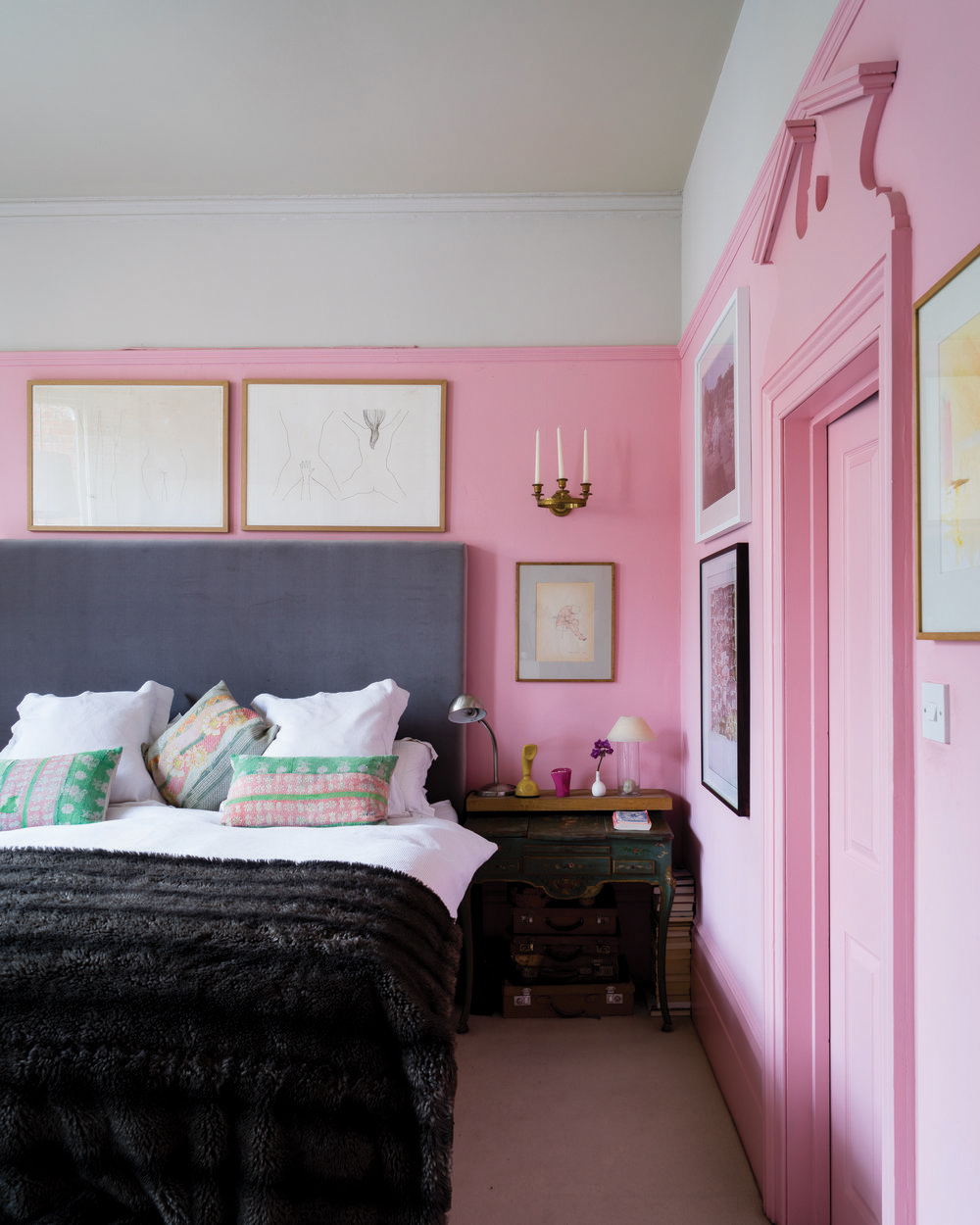
Sensing a theme here? The consensus seems to be avoid using bold, invigorating colors in a bedroom. ‘Your bedroom is a room to relax in and wind down and colors that would prevent that are colors with a high saturation to them. So I would stay clear of bright reds, magenta pinks, bright yellow – all of these are just over stimulating.’ explains Tash Bradley.
But as this pink bedroom proves, not all pinks should be avoided. It can be a perfect bedroom shade – soft, warming, and perfect for encouraging sleep. So stick with the more muddy pinks that have a healthy dose of brown in and if you do want to go bold, make sure to pair it with plenty of gentle neutrals and whites which are usually the best colors that go with pink in a bedroom.
6. Black
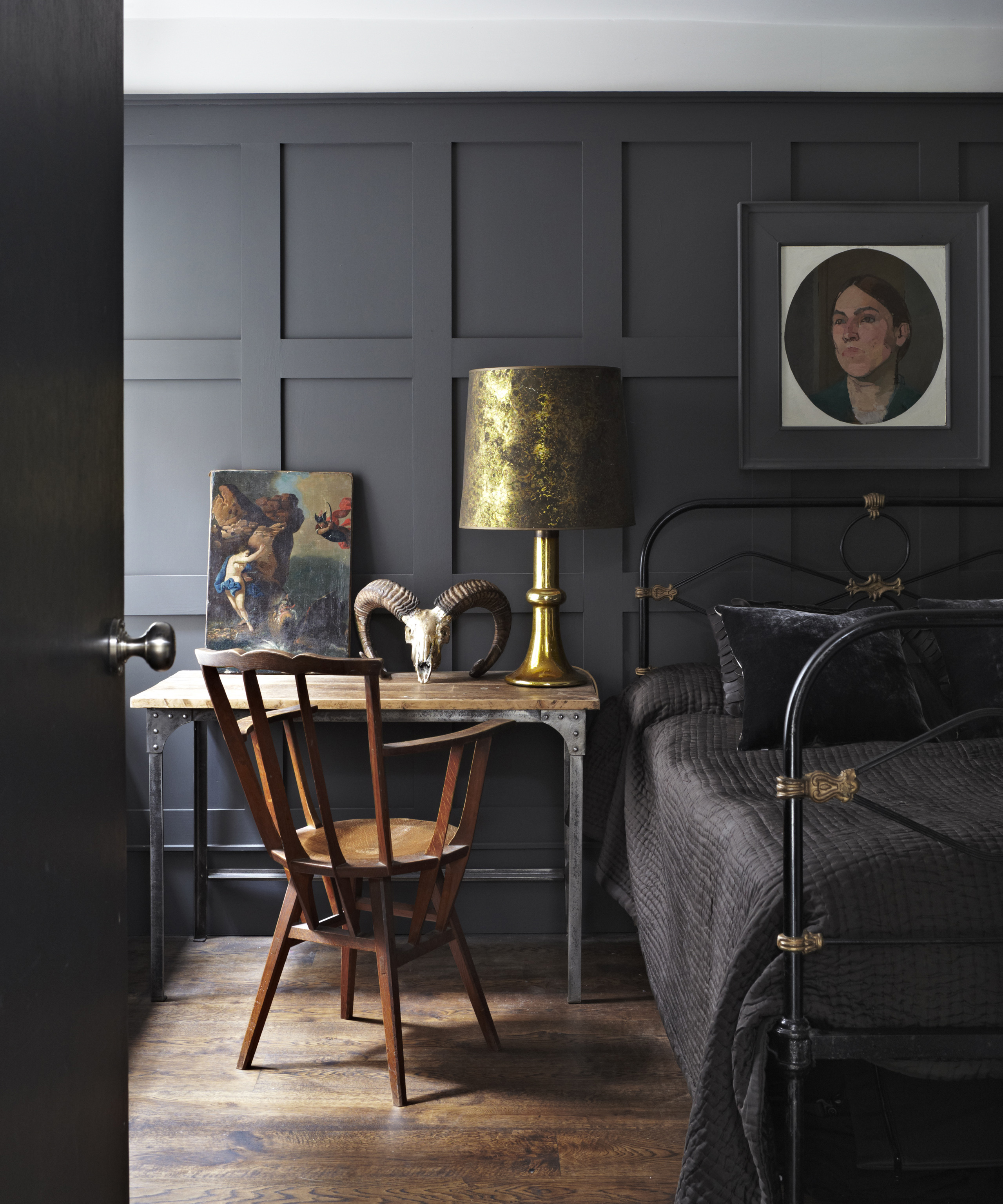
In a similar vein to avoiding gloomy greys in a bedroom, black can give a space a cave-like feel that just doesn't give those jump out of bed feeling invigorated vibes. Black saps light and can sap energy too, so for it to work in a bedroom there have to be very specific conditions. We'd say avoid it altogether in a master bedroom, spending a lot of time surrounded by darkness might help induce sleep but it's not going to be great for the mood, especially at the start of the day.
Black is admittedly in in the world of interior design trends, and we have seen some gorgeous examples of black bedrooms, so if you do want to dabble in the dark side we don't blame you. Maybe start with the spare room, these are often smaller spaces and in fact, black can work wonders at expanding a small room and blurring the dimensions. Keep the shade you choose soft and almost like the deepest of greys, and always go for a matte finish.
7. 'On trend' shades
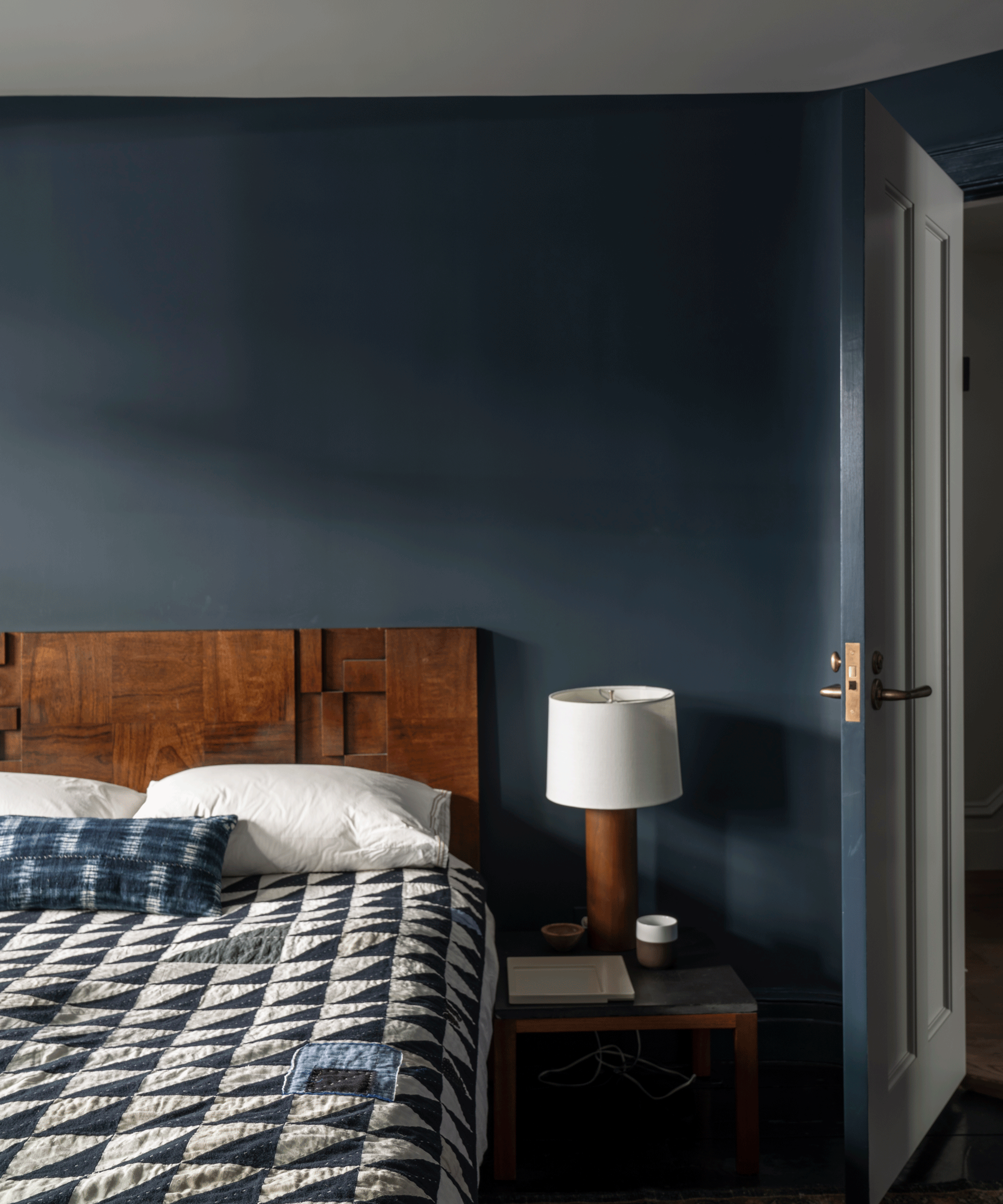
Okay not technically a color, but great advice on colors to avoid in a bedroom nonetheless. Save the trending colors you see all over Instagram and Pinterest for smaller, less lived-in spaces like bathrooms and hallways – those are the places to experiment. But when it comes to the bedroom, you're much better off keeping it classic and choosing colors that have longevity, won't date in a matter of months, and you won't get sick of quickly.
‘Color-wise, we tend to avoid trends and be driven by colors that you love,’ suggests Russell Whitehead, co-founder of 2LG Studios. ‘However, we do tend to avoid colors that are super energetic as we want to encourage calm and rest in bedrooms. We recently re-painted ours pale blue from lilac. We painted it lilac during the first lockdown, but after spending a year living with the color we wanted something calmer. We used Dulux Blue Skies and it's achieved what we wanted perfectly. we painted the ceiling, fireplace, and all the woodwork the same color for a really simple and calm relaxing space.’
What colors prevent sleep?
Colors that prevent sleep tend to be ones that are overly stimulating, so any really bright and vivid shades are likely to stop you from winding down. Avoid bright blue, greens, pinks, oranges, and yellows and instead opt for muted pastel versions of the color, as these will work to encourage sleep. Easy rule of thumb: the brighter the hue the worst for sleep, the softer the hue the better a calming bedroom paint idea.
Are warm or cool colors better for a bedroom?
'As color choice is so personal, you could argue that there are no wrong colors, it’s just about how you use it and the effect you want to create. Typically, however, a bedroom is place of sanctuary and you want to encourage a sense of restfulness. Muted colors are a good way to achieve this, evoking more of a calming atmosphere than energetic, full saturation hues.' advises Sarah Collingwood of Sinclair Studios.
'The choice of warm or cool based colors will also impact on the feeling of the room: both can be effective in bedrooms in different ways. Warm-toned shades, such as pale pink and terracotta, produce a comforting, cocooning feel, whereas cooler tones – think light blues and greens – can be serene and soothing.'
Be The First To Know
The Livingetc newsletters are your inside source for what’s shaping interiors now - and what’s next. Discover trend forecasts, smart style ideas, and curated shopping inspiration that brings design to life. Subscribe today and stay ahead of the curve.

Formerly the Digital Editor of Livingetc, Hebe is currently the Head of Interiors at sister site Homes & Gardens; she has a background in lifestyle and interior journalism and a passion for renovating small spaces. You'll usually find her attempting DIY, whether it's spray painting her whole kitchen, don't try that at home, or ever-changing the wallpaper in her entryway. She loves being able to help others make decisions when decorating their own homes. A couple of years ago she moved from renting to owning her first teeny tiny Edwardian flat in London with her whippet Willow (who yes she chose to match her interiors...) and is already on the lookout for her next project.
-
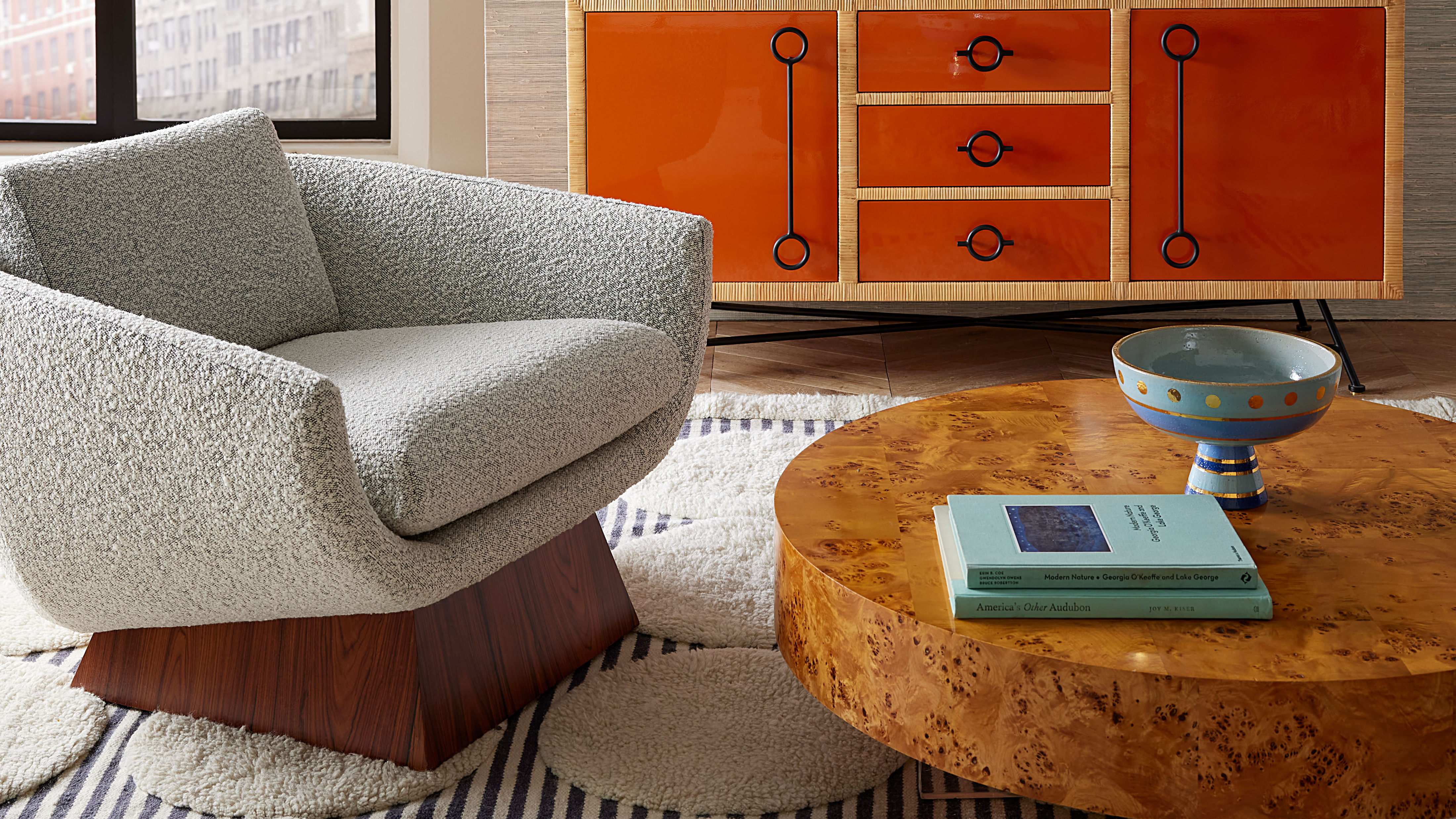 Burl Wood Decor Is 2025’s Most Coveted Comeback — Here’s How to Get the Storied Swirls for Less
Burl Wood Decor Is 2025’s Most Coveted Comeback — Here’s How to Get the Storied Swirls for LessIrregularity is the ultimate luxury, but you don’t need an antiques dealer to find it
By Julia Demer Published
-
 5 Garden Features That Instantly Add Value to Your Home — While Making Your Outdoor Space More Practical, too
5 Garden Features That Instantly Add Value to Your Home — While Making Your Outdoor Space More Practical, tooGet to know all the expert tips and tricks for making your backyard a standout selling point for your home.
By Maya Glantz Published